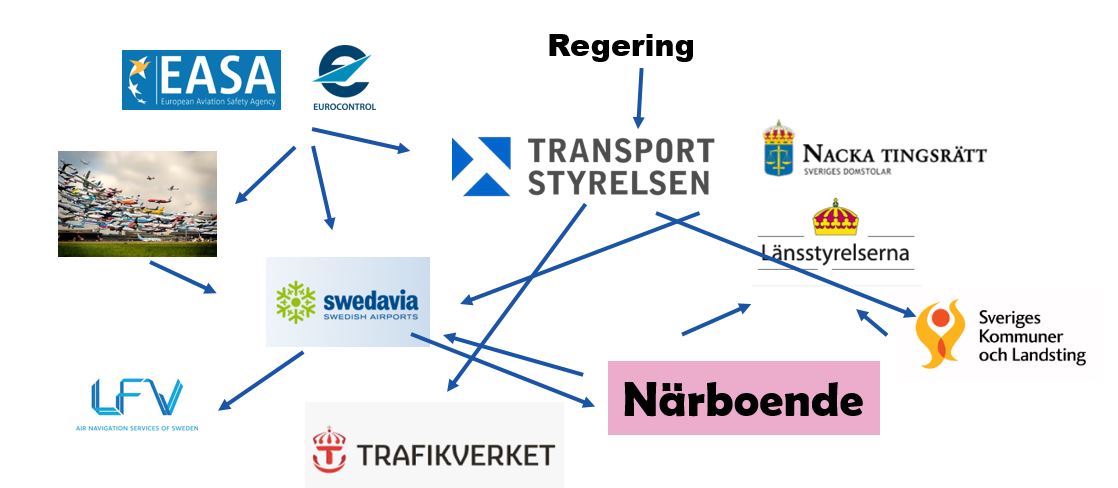INFRA
(An infrastructural system analysis of aviation and aircraft noise. )
Aviation is an Engineering System that fulfil important functions in society, like transporting people and cargo. Given these systems’ properties they are likely to support, but also interfere with other important functions in society including human well-being.

Research on large socio-technical systems has roots in various sources of knowledge, from history, sociology, psychology, technology, innovation, management etc. A common strand of this research is system analysis. The assumption is that without functional understanding, understanding of how the system works, it is impossible to have a holistic and intentional impact on a system’s change or transformation. In turn this is a requirement for sustainable development. The aim of the INFRA project is to develop knowledge about how the infrastructural aviation system works with a perspective from aircraft noise surrounding airports and its impact and consequences in society. The approach includes interviews and document studies among most essential stakeholders relevant from this perspective such as neighbours, air traffic control, airport, pilots, municipals, environmental courts, governmental agencies, regulations and political discussion.

The project has taken three inseparable but yet specific parts and paths. One is the overall system description, identification of stakeholders and their system perspectives, description of the current regime developing Arlanda and aviation in Sweden and in the Stockholm region. This is a sociotechnical regime with several dilemmas due to system requirements working both towards goals for protecting the environment and climate as well as enabling transportation and growth. The other central part is studying trust in this system and its relation to actors’ roles and its influence of some developments in this system. On a practical level, this will provide professionals within aviation, working with reducing aircraft noise, with a better foundation for building trust and cooperation within the system. The third part is to investigate the actual conditions for implementing novel technology to the current traffic around Arlanda and Bromma airport with respect to technology, system of system interoperability between current technology at airport, in ATM and aircrafts, including procedure development in a comparative analysis. The operations, regulatory and technology interplay is complex and the study shows that even those actively working in different roles in the system has different understanding on how this are and why.
Enhanced understanding of the system and various system perspectives is seen as essential to successful implementation of system change needed for noise reduction and possibly other sustainable aspects in the future.
Project members
